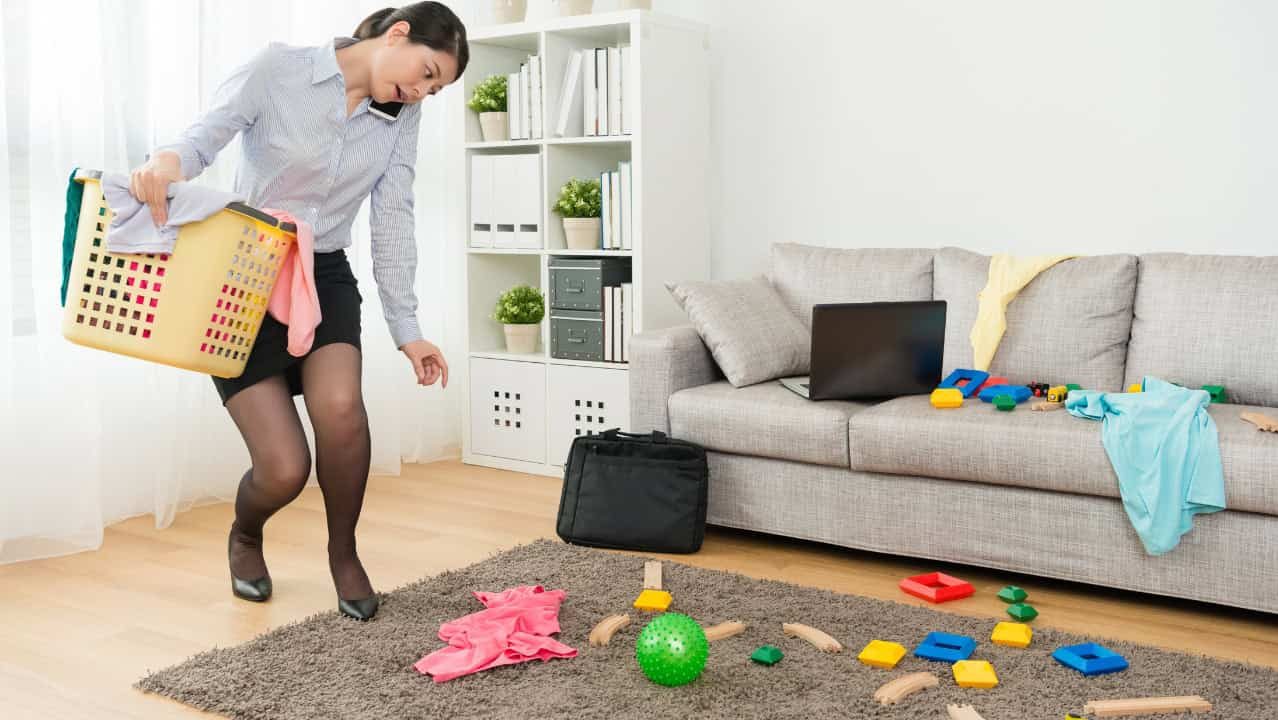Decluttering is currently a hot trend, promising to provide both aesthetic and mental benefits. However, when it comes to decluttering a child’s room, the experience can take a different turn.
The process can turn into a stressful and challenging task that might feel less rewarding than initially intended. In this post, we’ll discuss a decluttering challenge I recently undertook in my kid’s room.
I’ll provide a detailed account of each step, explaining why it didn’t work out and why I’ve decided not to repeat the process. This candid account will hopefully provide valuable insights for anyone considering a similar endeavor.
The Toy Purge

The first step in my decluttering challenge involved sorting through my child’s toys. I had read that the minimalist approach — keeping only the most cherished toys — would make the room cleaner and help my child appreciate their possessions more. However, the process was emotionally draining, both for my child and me. It was tough to decide which toys were important, and discarding others felt like discarding precious memories.
In the end, the minimized toy collection didn’t make as big a difference as I’d hoped. The room was slightly tidier, but my child often missed their old toys. The emotional distress outweighed the physical decluttering benefits.
Bookshelf Overhaul

Next, I tackled the bookshelf. I thought streamlining the books would be easier since we could always borrow books from the library. However, I underestimated the emotional attachment my child had to their books. The purge resulted in tears and tantrums.
Furthermore, the slimmed-down bookshelf didn’t really enhance the room’s aesthetics or functionality. We ended up re-purchasing some of the discarded books, making the whole process seem redundant and wasteful.
Wardrobe Simplification

Adopting a minimalist wardrobe seemed like a practical idea. The plan was to keep only the most frequently worn clothes, but this approach proved to be impractical. Children’s clothing needs are diverse — schoolwear, playwear, party wear, and seasonal wear. Reducing their wardrobe caused more laundry and last-minute shopping for appropriate clothing.
Additionally, children grow quickly, and the minimalist wardrobe didn’t accommodate the need for bigger sizes. The wardrobe simplification wasn’t cost-effective or practical in the long run.
Artwork Archive

Children’s artwork is typically a source of clutter. I tried to digitize the artwork to preserve it without taking up physical space. However, the digital versions didn’t evoke the same joy and nostalgia as the originals. Plus, my child didn’t appreciate their artwork being discarded, even if it was stored digitally.
The artwork decluttering made the room look impersonal and sterile. The emotional connection with the tangible artwork was lost, making this decluttering step feel counterproductive.
Stationery Simplification

Next, I attempted to minimize the collection of pens, pencils, markers, crayons, and other stationery items. The idea was to keep only the most essential items. Unfortunately, this resulted in frequent replenishing of supplies and frustration when a specific color or type of pen was needed.
The decluttered stationery drawer didn’t make finding items any easier. It merely led to more frequent shopping trips and increased frustration.
Bed Linen Reduction

I also tried reducing the number of bed sheets and blankets, keeping only two sets. This led to more frequent laundry cycles and the inconvenience of not having extra sheets on hand for unexpected situations like bedwetting or illness.
The reduced linen storage space didn’t significantly contribute to the room’s overall tidiness. Instead, it added to the daily stress and workload.
Eliminating Decorations

I thought removing some room decorations would create a cleaner, less distracting environment. However, my child missed their beloved decorations, and the room seemed less vibrant and inviting without them.
While the room did look more minimalist, it lacked a child-friendly atmosphere. The décor decluttering didn’t enhance the room as I had hoped.
Furniture Reduction

I tried to declutter the room by reducing furniture. The idea was to have multifunctional furniture that could save space. However, the limited furniture made the room less comfortable and versatile. There were fewer options for storage, seating, and play.
The minimalist furniture didn’t make the room look spacious or organized. Instead, it made the room less functional and enjoyable for my child.
Minimizing Keepsakes

The final step in my decluttering challenge involved minimizing keepsakes — small items that held sentimental value. This was by far the hardest part. These items might be considered clutter, but they represent cherished memories and milestones.
Getting rid of keepsakes didn’t make the room neater or more organized. Instead, it made the room feel less personal and homely. The emotional value of these items far outweighed their physical presence.














